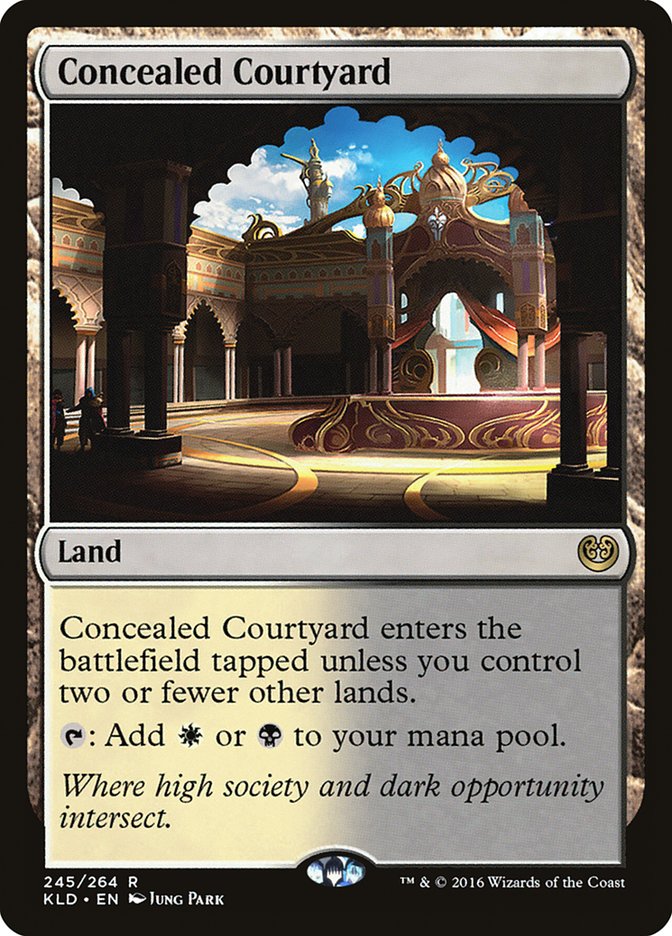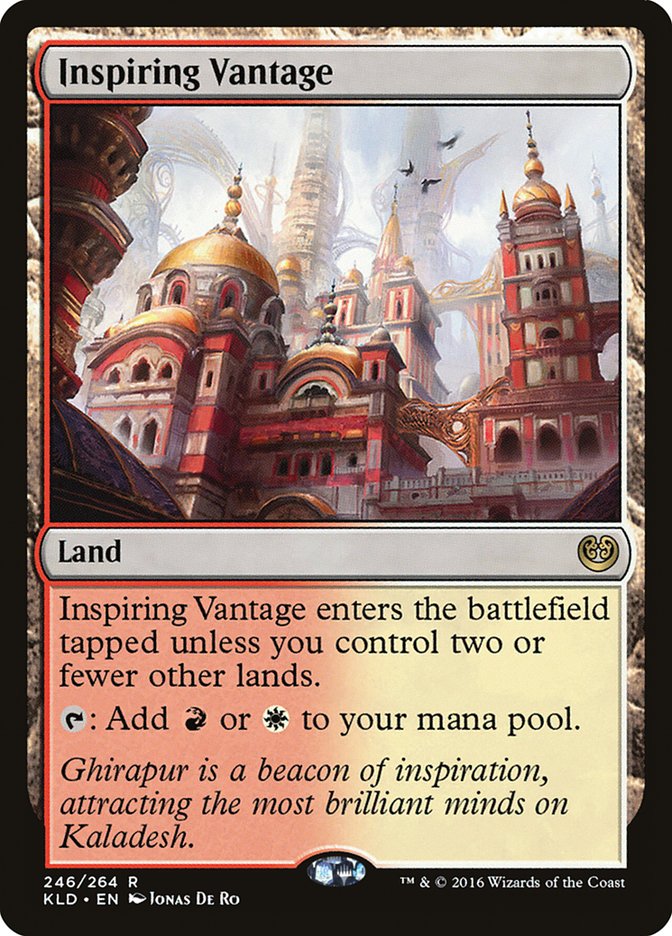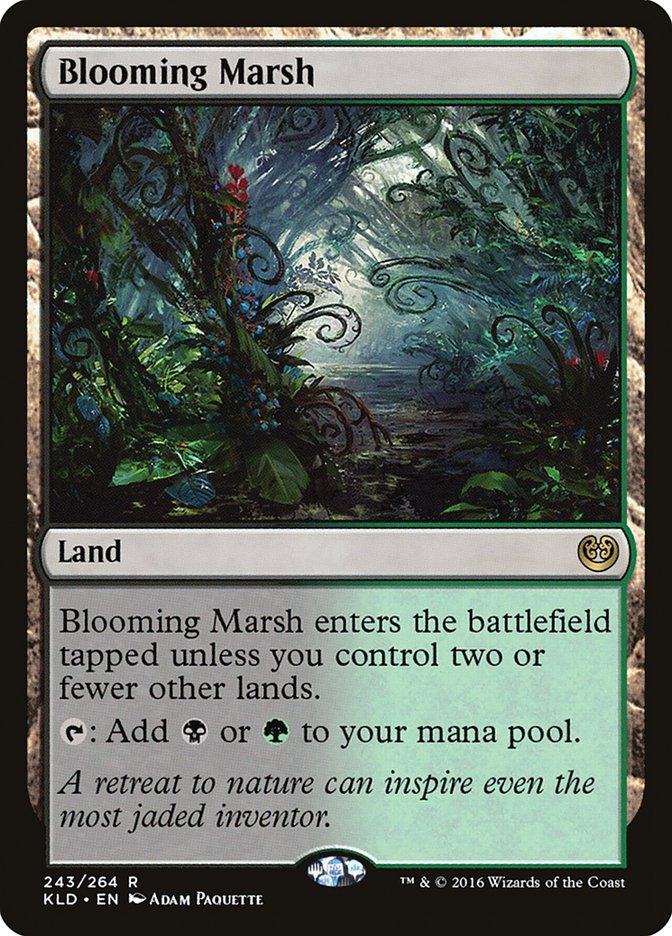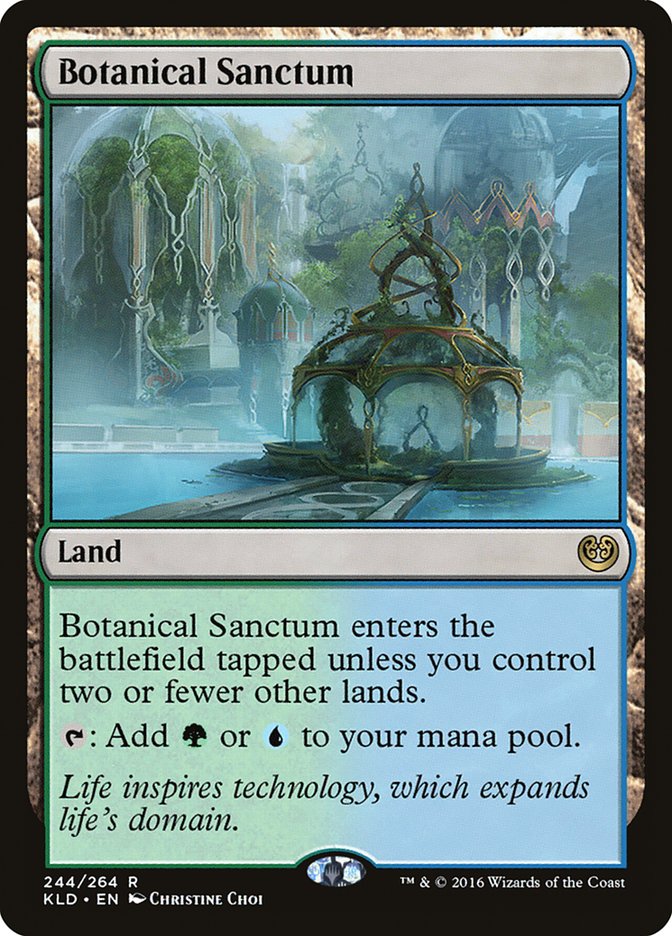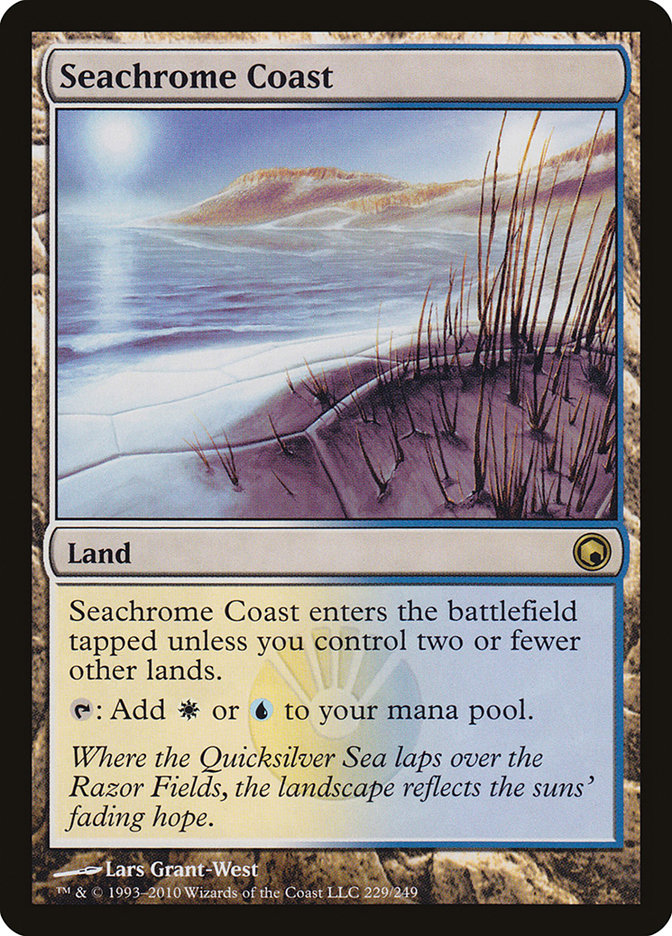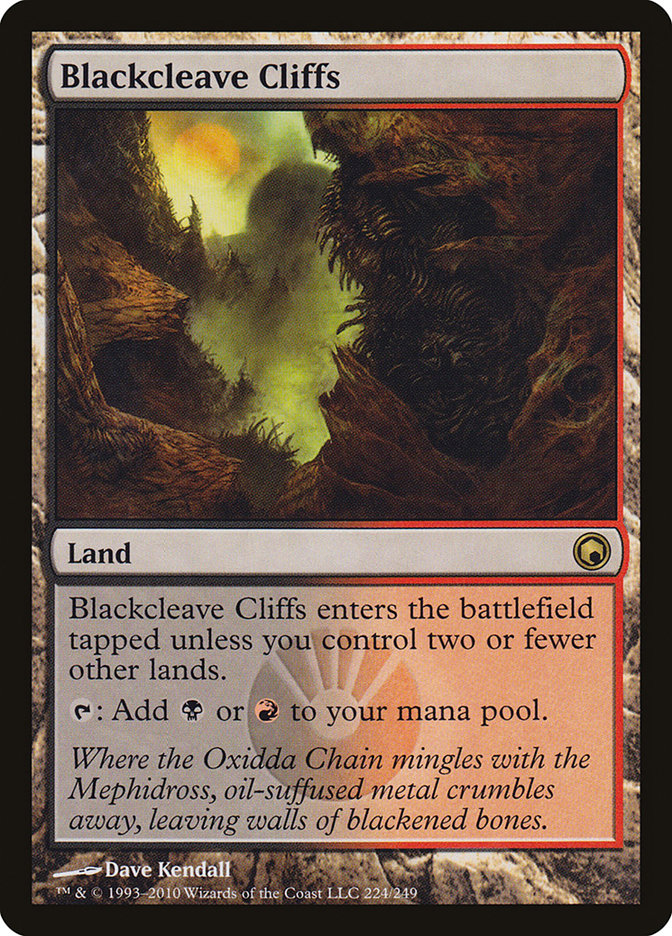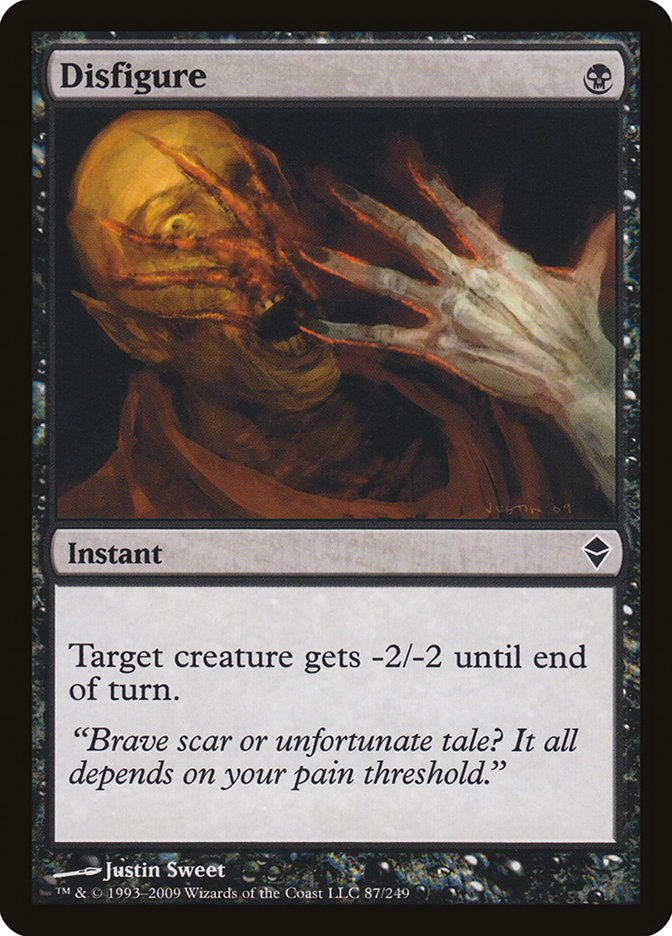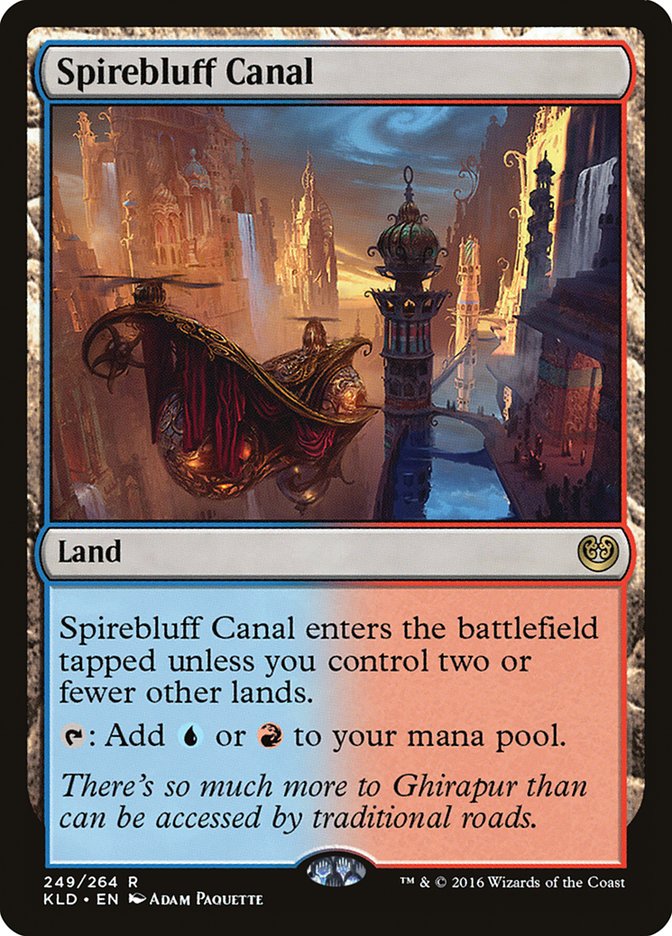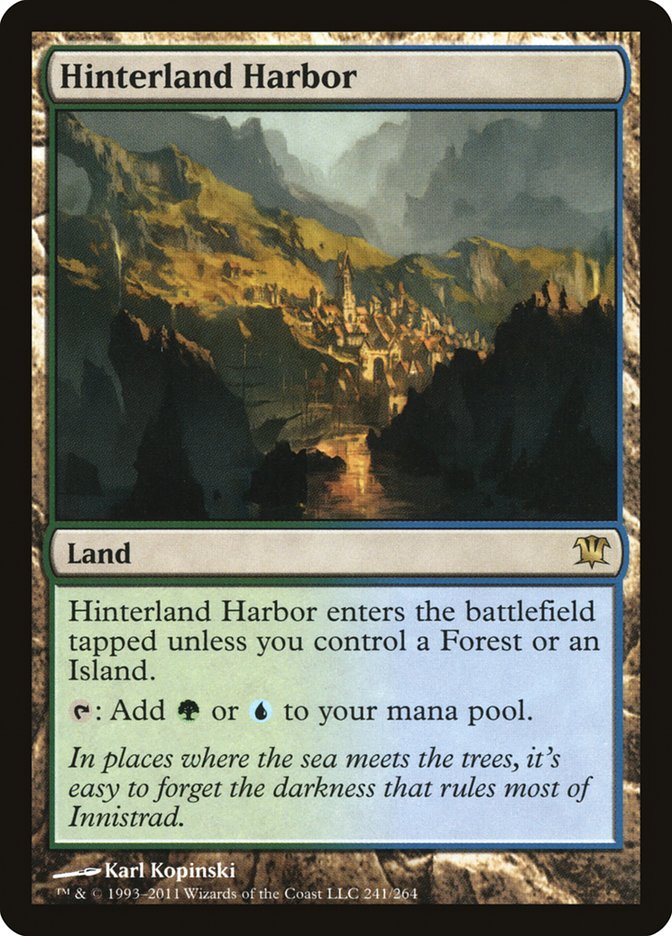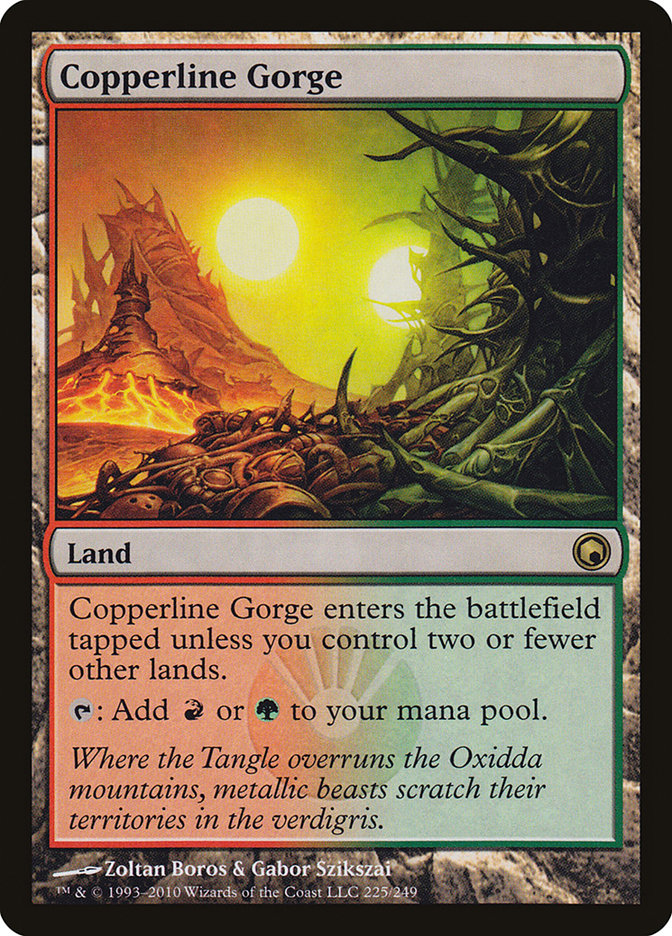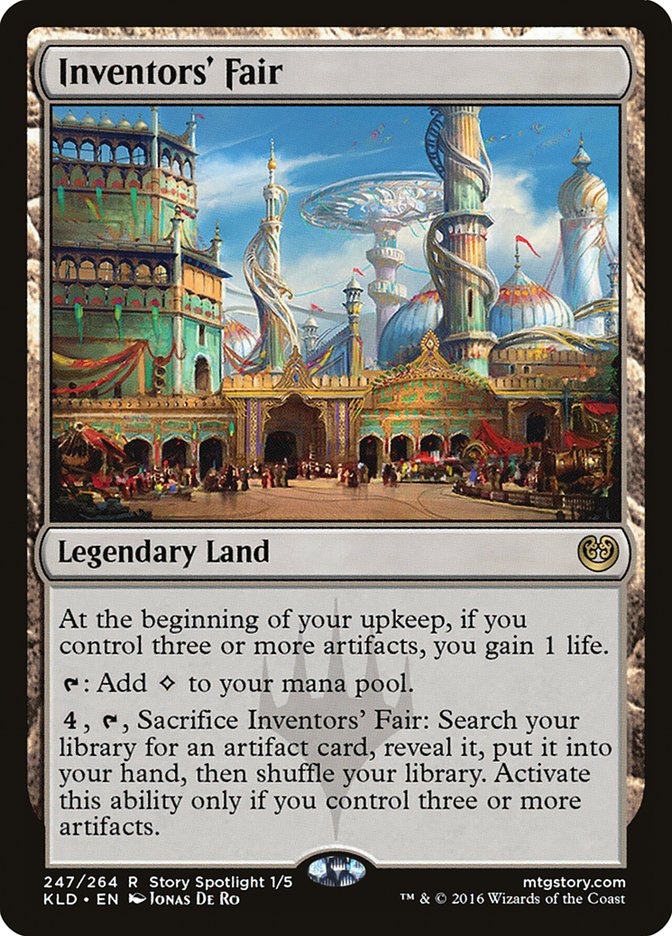It’s far too early in the spoiler season to start brewing decks for the new Standard. But what cards in Kaladesh are going to affect Modern? Cards printed in new sets don’t often break into Modern, but we’ve already got a few goodies out of PAX West that will definitely be making waves. And today, we’re going to be talking about a new set of (sweet) lands that finally completes a cycle started in Scars of Mirrodin.
While the spoilers from PAX West are bringing all the hype, with flashy new planeswalkers and some awesome mechanics (pun intended), the ones that resonated with me the most were these new lands. They incentivize you to play decks that are lower to the ground. They are built to make games of Magic go faster. And after such a glacially slow Standard format featuring more unintentional draws than I’ve ever seen (including a rare one by me last weekend), I’m ready to speed things up. We got race cars. We got fastlands. So start your engines, and get in the damn car.
Gotta Go Fast
I suspect this land will see more play in Standard than Modern but could be useful for a number of Modern archetypes. While we’re losing Duress with the rotation of Dragons of Tarkir, I don’t think it would be far-fetched to see it reprinted yet again. It is a fairly safe card for Standard in that it gives black decks a way to fend off unfair late-game spells like planeswalkers without much investment.
Concealed Courtyard might pair awkwardly with Shambling Vent, making it difficult for your fourth land to enter the battlefield untapped, which is a big deal when Gideon, Ally of Zendikar is one of the deck’s major payoffs. But if there are enough cheap spells in both colors, Concealed Courtyard will fit right into this already-existing archetype (that doesn’t lose much from rotation).
Red decks traditionally utilize these lands better than most other colors because the tournament-worthy cards tend to hit lower on the curve. With Dwarves being one of the new clans on Kaladesh, and their leader already being confirmed white and red, I don’t think it will be too hard for this card to find a home. I know it would currently slot into W/R Humans without a second thought, but unfortunately many of those cards will be rotating.
The strength of this card will rely, almost entirely, on whether or not green will get a one-mana acceleration spell. Birds of Paradise and Llanowar Elves have been in most Standard formats, and only recently have we been without either. I don’t think it is a stretch to see a one-drop accelerant come back, but it is impossible to evaluate either of these lands without more to go on.
As far as Modern goes, this might be one of the bigger upgrades for Abzan. I’m already under the impression that Abzan should go much smaller with their creature-base in order to play a suite of two-drops. Siege Rhino sucks, and Grim Flayer is the future!
Again, I don’t know how good it will be in Standard, but it seems like a perfect fit for Infect in Modern. One of the biggest drawbacks for Infect is taking so much damage…just to cast Blighted Agent. Now, Botanical Sanctum takes away a lot of that pressure.
I know it might be difficult to find room and still cast Become Immense, but it wouldn’t surprise me if Become Immense got banned soon. With Death’s Shadow and Infect roaming around, and both using this card to do some busted things, and with them already suspicious of the delve mechanic, it would not surprise me to see it get the axe. And if that’s the case, every Infect player in the world is going to want four copies of Botanical Sanctum.
It’s not rocket science, people.
Now, Let’s Get Serious
I wanted to start with those four, because the last one will be the primary focus of the article. Suffice it to say that Seachrome Coast and friends have been the third- or fourth-best cycle of lands in Modern since its inception. Giving decks access to two different colors of mana on the first turn without taking damage is powerful, but the spells revolving around the color combination makes all the difference.
The fact that some decks play these lands because they rarely want or need to hit their fourth land drop is an entirely other dimension. Free mana fixing, at its core, is what makes these lands so good. When Seachrome Coast was in Standard, it pushed both Delver and StoneBlade decks to the forefront of the format. Having a land that could cast Preordain and Ponder or Condemn and Path to Exile on the first turn was nice, but the big draw was playing cheap threats on the first few turns without a major drawback after casting said Preordain or Ponder.
But back then, we didn’t really understand how good these lands were. They were all we had access to if we wanted to play two-color decks. In Modern, you have years and years of land cycles to choose from, and the one that stood out the most as being incomplete was the fastland cycle from Scars of Mirrodin. And while some decks played them, they weren’t in every deck. They weren’t in most decks for years. Only recently have we started to see more copies of Copperline Gorge in Burn decks, Darkslick Shores in Grixis decks, and Seachrome Coast in U/W/x decks. And even now, I don’t think they’re played as much as they should be.
But some decks in Modern actually hinge on these lands. One of the primary draws of Jund is the fact that you get to play four copies of Blackcleave Cliffs. Whether you lead off the game with an Inquisition of Kozilek or Lightning Bolt, Blackcleave Cliffs has you covered. The same can’t be said about any other land in the format without a significant drawback. Losing life to fix your mana is a big deal when one of the premier decks in the format is Burn (which just won a Grand Prix, by the way). That is one of the reasons why Blackcleave Cliffs is so powerful, and why I think it might secretly be the best land in Modern, but only because of the spells surrounding it.
The real draw of lands like these is when there are multiple one-mana spells that you actually want to cast on the first turn. Path to Exile and Serum Visions from Seachrome Coast isn’t all that exciting because casting Path to Exile on the first turn comes with a big downside. Darkslick Shores picks up some of the slack here, allowing you to play a discard spell or draw spell, but there aren’t a lot of options when it comes to cheap removal out of either color (or at least, not that you’d actually want to play). Disfigure is just about it.
So the real kicker here is that Lightning Bolt is one of the best cards in Modern, and any land that can cast Lightning Bolt besides Mountain might need a second look. This is especially true when you start to think about the implications of mixing Lightning Bolt with cheap draw spells in blue. U/R decks are a big part of Modern, and most of them have low land counts and low curves already. Serum Visions is a powerful opening play, and any land that can cast Serum Visions and Lightning Bolt on the first turn without dealing you damage comes with a drawback…until now.
This will be the best card in Modern. Not the best land, not the best mana fixer, but the best card. There are already a slew of existing decks that want this land, and I think there could be some decks actually built because this card now exists. Allow me to elaborate.
When I saw the cycle spoiled at PAX West, the first thought that came to my mind was, “These lands are awesome. They’re going to allow so many decks to fight back against Burn.” Then it hit me: nearly every deck I’ve been playing over the last few months is a significant underdog to Burn, and almost entirely because I take so much damage from my lands. While I do cast a Gitaxian Probe now and again, the major underlying reason I lose is because I tend to deal myself four or five points of damage just to cast my spells on time.
Of course, these lands aren’t going to supplant the fetchland-shockland combination we all have grown accustomed to, but it will give people the flexibility to build decks and manabases in a whole new way. Instead of relying so heavily on fetchlands, we can start cutting back significantly. We can start with six or eight of these fastlands in our decks and build our spell base around those. It will take some getting used to, and there will be some growing pains, but keeping your life total high in a world full of Lava Spike is a big deal.
But most color combinations already have access to some of these fastlands, and you might think that adding five new ones to the mix won’t be a big deal. Well, you could be right, but I’m willing to bet that these will change the game. Fetchlands and shocklands did play well with Sulfur Falls and Hinterland Harbor, but that put you in a tough spot when your deck was full of one-mana spells. How could you justify playing lands that might enter the battlefield tapped in Modern that weren’t named Raging Ravine or Celestial Colonnade? But those lands, the Sulfur Falls and so on, incentivized you to play more fetchlands and shocklands. The fastlands actually push you away from that method of manabase building.
Fastlands reward you for playing a lower curve and a lower land-count. They will speed up some decks in the format by a lot and are some of the best lands ever printed to cast Delver of Secrets. To say I’m excited is an understatement. But yeah, you got me. Spirebluff Canal does a whole lot more than cast Delver of Secrets.
Creatures (4)
Lands (18)
Spells (38)
- 4 Lightning Bolt
- 4 Serum Visions
- 4 Lightning Helix
- 3 Remand
- 4 Manamorphose
- 4 Pyromancer Ascension
- 4 Gitaxian Probe
- 4 Visions of Beyond
- 3 Faithless Looting
- 4 Thought Scour
Sideboard

Of course, this version could use a bit of an overhaul. Now that we have access to Seachrome Coast, Inspiring Vantage, and Spirebluff Canal, a version could be built with those taking up the majority of the manabase. As it stands, you need to balance the addition of these lands with the total number of colored mana sources. Instead of just playing a bunch of fetchlands and corresponding shocklands and basics, we might actually have to think when building our manabase!
And that’s exactly my point: these lands make you think. How can I build my deck around this new land? I’m under the impression that, in Magic, you should start with the manabase and build your deck around it. Most people fall into the trap of building their decks around their spells and “worrying about the mana later.” So many people post decklists that play three, four, or even five colors, and literally leave the manabase blank. “25 lands,” they say. “We’ll get to that later,” they say.
That isn’t going to cut it. Ever. Magic isn’t a fantasy land where you get to do whatever you want. Playing certain spells or adding another color to your deck is going to come with a drawback. Sometimes you aren’t going to be able to cast your spell when you need to. And sometimes you’re going to draw that “splashed” color when you need to draw one of your primary colors, and it’s going to lose you the game.
So if all you take away from this article is that you should start with what your manabase can do, and work your way up from there, then I’m happy.
But as I’ve said before, building a manabase in Modern is usually much easier than in Standard. We have access to more lands than we know what to do with. As Gerry Thompson once said, “I think this manabase is too good.” I didn’t really understand what he meant at the time, but as we started to talk about it more, it finally started to click. Each nonbasic land we add to a deck comes with a minor drawback. At some point, the mana is so good that we can expand to another color or choose to regress by playing more basic lands. I mean, when your only red card is Lightning Bolt, and your only green card is Tarmogoyf, maybe you shouldn’t be playing seventeen sources of each color.
That isn’t to say you shouldn’t maximize your chances of casting all your spells on time if there is no downside, but most of the time there is certainly going to be one. That could mean your fourth land will enter the batlefield tapped more often (Spirebluff Canal), or you’ll take more damage from your lands (Steam Vents, Scalding Tarn), or you will get punished by Blood Moon. Every nonbasic land in Magic comes with a drawback of some kind.
But that doesn’t mean basic lands have no drawback. They only tap for one color, after all. But they don’t deal you damage and they enter the battlefield untapped, so they do have a lot going for them. But I didn’t come here to tell you that Island is a good Magic card. You probably already knew that. I’m just trying to make a point.
Manabases in Magic are more important than you think, and every time a new cycle of lands gets printed, it is worth talking about their impact on their respective formats. I have no clue how good they’re going to be in Standard just yet, but I think it is safe to say that a lot of existing Modern decks were looking for these lands. And, on top of that, I wouldn’t be surprised if a new deck or three popped up in the first few weeks after the release of Kaladesh featuring some of these new manabases.
Kaladesh is coming soon, and PAX West started the spoiler season off with a bang. They are really pushing some of these cards (ahem, Chandra, Torch of Defiance, also known as Chandra, the Mind Sculptor), and I can’t wait to start test(-driv)ing them out. While the lands excite me the most, I know there’s a lot more to come. Welcome to the Inventors’ Fair!
Let’s get to work!


